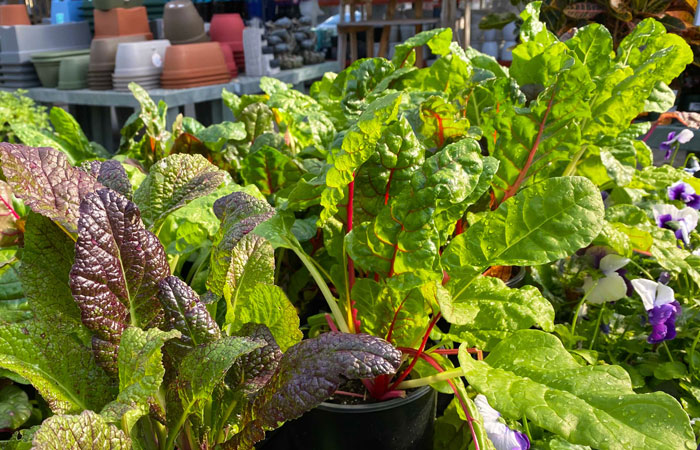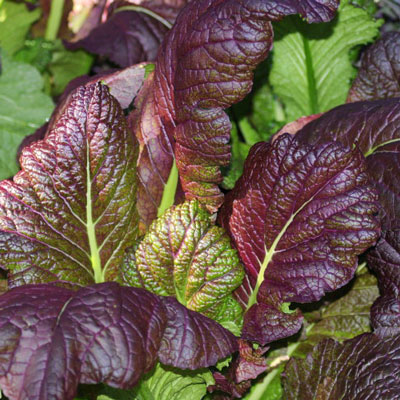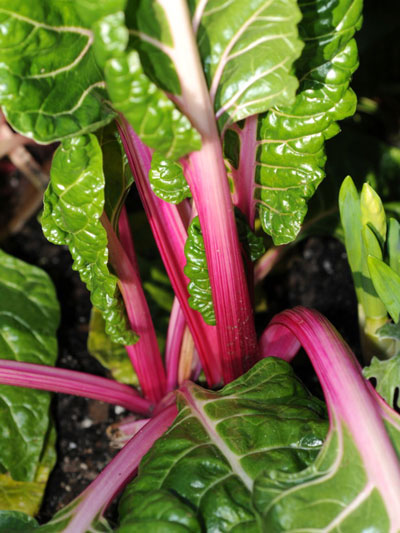Ornamental Edibles
I remember the days when parsley was about the prettiest vegetable you’d find in the garden.
And parsley still does make a lovely bed edging (and a great home for black swallowtail caterpillars for folks planting for butterflies).
But I want to ramp it up a notch or two.

Please meet two fancy-leafed edibles that deserve a spot in everyone’s garden.

• Red Giant Mustard: Here’s a cold-tolerant, lush-leafed beauty that provides a big, red pile of fluffy foliage in a flower garden around the patio or large container pot at the entryway. It makes a great filler plant when used with bulbs, pansies, pinks, snaps and other cool-season color. It’s robust and it’s handsome.
• Ornamental Swiss chard: The original selection I grew as a kid was called ‘Rhubarb’ because its petioles were cherry-red, the perfect companion to its dark, crimson-green leaf blades.
But then along came a mixture of riotously bright colors including pinks, whites, yellows and rosy-reds under the name of ‘Bright Lights.’ They’re still popular. If you look closely at the lead photo, you can see the petioles of the leaves are yellow and red. Those are Bright Lights.

As I was doing a bit of research for this story online, I came across another selection of Swiss chard that was shown on the Bellingrath Gardens (Alabama) website. ‘Peppermint’ Swiss chard produces pink petioles for yet another cheerful good look.
All of these plants hold up to a great deal of cold. Keep them growing actively. In extreme cold, cover them with frost cloth (lightweight, gauze-like fabric designed specifically for this task). It can make a big difference in the survival of these plants and other winter color selections.
